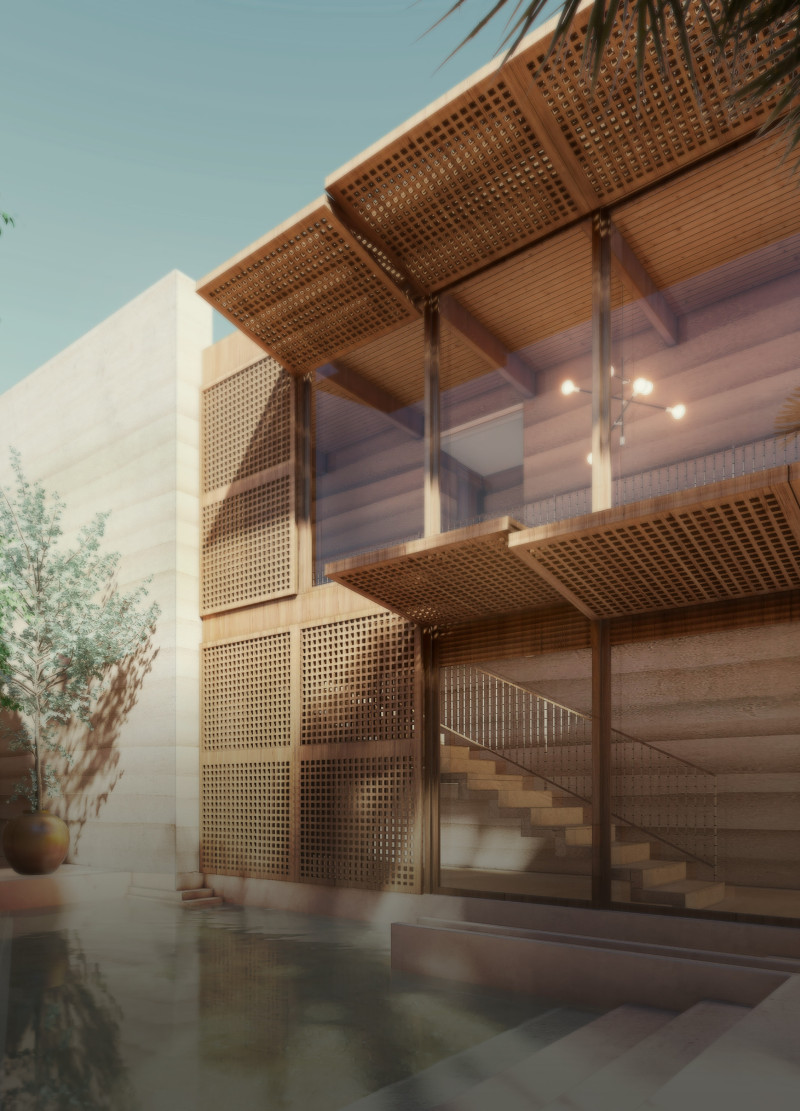5 key facts about this project
At the heart of the design is a careful consideration of space utilization. Each area of the project serves a distinct purpose, effectively catering to both individual and communal needs. The layout promotes fluid movement throughout the building, allowing for an intuitive flow that enhances user experience. Functionality is a key focus, with spaces designed to be versatile, accommodating various activities and user groups. This adaptability is essential in modern architecture, where demands for space frequently shift due to changing lifestyles.
Materiality also plays a crucial role in the project. A selection of sustainable materials is employed, emphasizing not only aesthetic appeal but also environmental stewardship. The project utilizes locally sourced timber, which creates a warm, inviting atmosphere while minimizing the carbon footprint associated with transportation. Other materials include concrete, chosen for its durability and structural integrity, and glass, which offers transparency and a connection to the outdoors. This careful choice of materials reflects a commitment to quality and a respect for the surrounding landscape, allowing the project to harmonize with its environment.
Unique design approaches are evident throughout the project, particularly in the use of natural light and ventilation. By maximizing windows and incorporating skylights, the design reduces reliance on artificial lighting, promoting energy efficiency. The orientation of the building takes advantage of prevailing winds, facilitating passive cooling during warmer months. These features not only contribute to the building’s sustainability but also enhance the overall comfort of its occupants.
Another noteworthy aspect of the project is its relationship with the surroundings. The landscape design complements the architecture, incorporating native plants that require minimal irrigation. Outdoor spaces are thoughtfully designed to encourage social interaction, with areas for gathering, relaxation, and recreation, fostering a sense of community among users. This emphasis on connectivity with the external environment blurs the boundaries between indoor and outdoor spaces, creating a seamless transition that enriches the user experience.
The architectural design also embraces digital technologies, which can be seen in the integration of smart building systems. These technologies enhance the functionality of the space, allowing for energy monitoring and user control of lighting and climate. This forward-thinking approach reflects a broader trend in architecture to utilize technology in ways that improve sustainability and enhance daily living.
In summary, this architectural project embodies a sophisticated blend of functionality, sustainability, and contextual awareness. Its design reflects thoughtful consideration of user needs and environmental impact, demonstrating how modern architecture can serve both people and the planet. The unique combination of materials, innovative approaches to light and space, and a coherent connection to the landscape set this project apart as a meaningful contribution to contemporary architecture.
For a deeper understanding of this project, readers are encouraged to explore the architectural plans, sections, and design ideas that further illustrate the thoughtful considerations and innovative solutions presented throughout the design. Engaging with these elements will provide insights into the architect's vision and the intricate details that make this project noteworthy in the field of architecture.


























